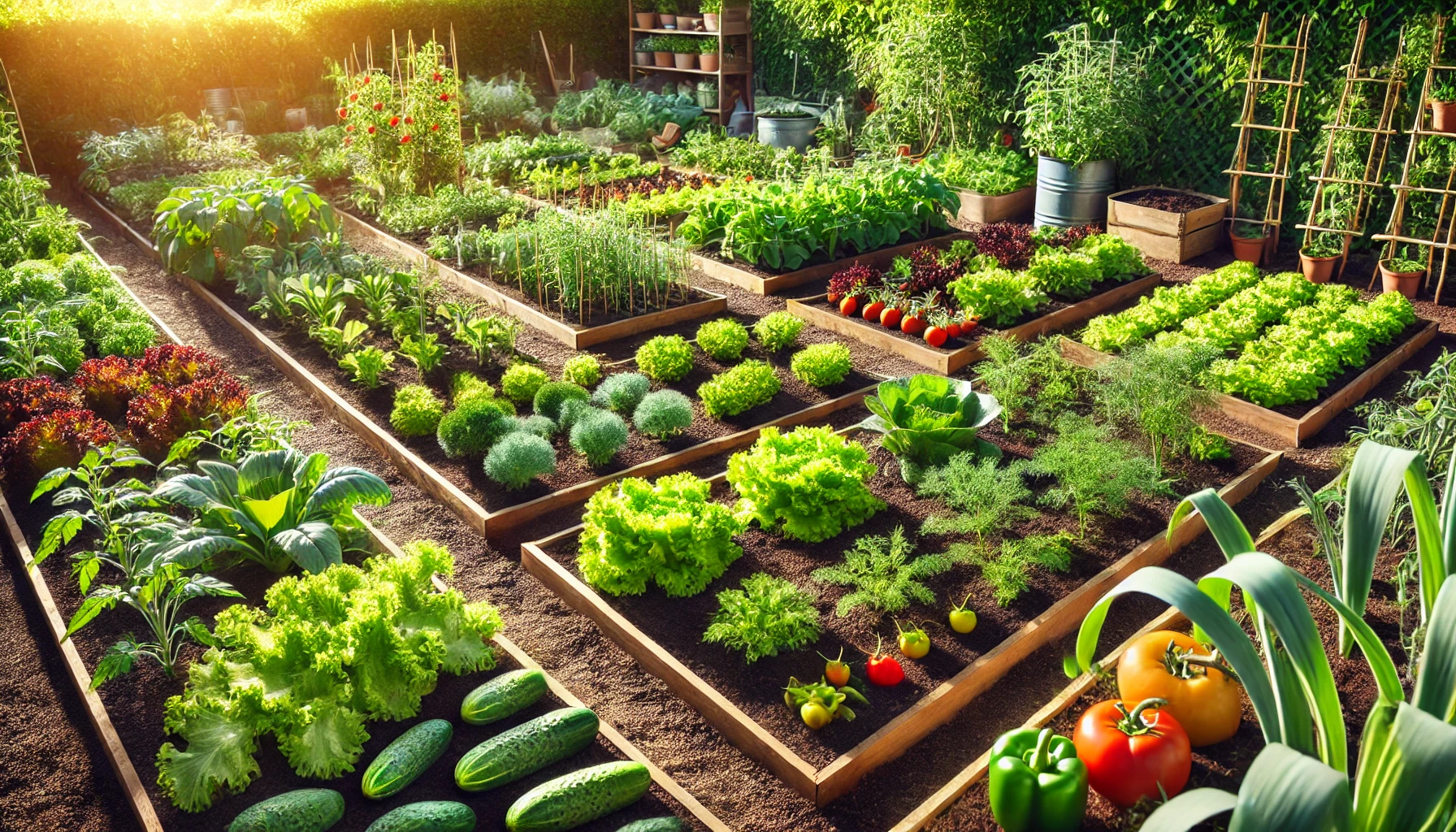Creating a vegetable garden in your backyard can be a rewarding experience, providing you with fresh, healthy produce right at your doorstep. Whether you’re an experienced gardener or a beginner, growing your own vegetables is a great way to enjoy the outdoors and cultivate your own food. In this guide, we’ll walk you through the steps of creating a beautiful and productive vegetable garden.
Step 1: Plan Your Vegetable Garden
The first step in creating a vegetable garden is planning. Take the time to think about what you want to grow, where you want to grow it, and how you can optimize the space.
- Choose Your Vegetables: Start by selecting vegetables that grow well in your climate. Popular choices for beginners include tomatoes, lettuce, carrots, cucumbers, and peppers.
- Consider Space Requirements: Some vegetables require more space to grow, while others can thrive in smaller areas. Consider the size of your garden and the space needs of each plant.
- Plan for Companion Planting: Some vegetables grow better when planted together, while others can harm each other. For example, planting basil next to tomatoes helps repel pests, while planting onions with carrots can improve growth.
Step 2: Choose the Right Location
The location of your vegetable garden is crucial for its success. Most vegetables need plenty of sunlight and well-drained soil to thrive.
- Sunlight: Choose a spot that gets at least 6–8 hours of sunlight per day. Vegetables like tomatoes, peppers, and squash need full sun to grow well.
- Soil Quality: Vegetables thrive in rich, loamy soil that drains well. If your soil is heavy and clay-like, you may need to improve it by adding compost or organic matter to improve drainage.
- Accessibility: Make sure the location is easily accessible for watering, harvesting, and tending to your plants. Raised beds or container gardens can make it easier to manage a vegetable garden, especially in smaller spaces.
Step 3: Prepare the Soil
Healthy soil is the foundation of a successful vegetable garden. Before planting, take the time to improve the soil and make it more fertile.
- Test the Soil: Conduct a soil test to determine its pH and nutrient levels. Most vegetables prefer slightly acidic soil (pH 6.0–6.8). You can adjust the soil’s pH using lime (to raise it) or sulfur (to lower it).
- Add Organic Matter: Incorporate compost, manure, or other organic materials into the soil to improve its texture and nutrient content. Organic matter helps retain moisture and provides essential nutrients for plant growth.
- Loosen the Soil: Use a garden fork or tiller to break up compacted soil. This allows for better root development and promotes healthy plant growth.
Step 4: Plant Your Vegetables
Once the soil is prepared, it’s time to plant your vegetables. Follow these tips to ensure that your plants get the best start:
- Plant at the Right Depth: Make sure to plant your vegetables at the correct depth. Follow the guidelines on seed packets or plant labels for the ideal planting depth.
- Space Your Plants: Give your vegetables enough space to grow by following the recommended spacing guidelines. Overcrowding can lead to poor air circulation and competition for nutrients.
- Water Immediately After Planting: Water your vegetables right after planting to help settle the soil and ensure the roots have moisture.
Step 5: Maintain Your Vegetable Garden
Ongoing maintenance is crucial to keeping your vegetable garden healthy and productive.
- Watering: Vegetables need regular watering, especially during dry spells. Water deeply at the base of the plants to encourage strong root growth. Avoid overhead watering, which can lead to fungal diseases.
- Weeding: Weeds compete with your vegetables for water, light, and nutrients. Regularly remove weeds by hand or with a hoe to keep your garden free of competition.
- Mulching: Apply a layer of mulch around your vegetables to retain moisture, prevent weed growth, and regulate soil temperature.
Step 6: Harvesting Your Vegetables
The best part of gardening is harvesting the fruits of your labor. Knowing when to harvest your vegetables ensures that they are picked at their peak flavor and quality.
- Harvest at the Right Time: Different vegetables have different harvest times. For example, tomatoes should be harvested when they are fully ripe and have turned their characteristic color, while lettuce can be picked as soon as the leaves are large enough to eat.
- Use the Right Tools: Use sharp scissors or a garden knife to harvest your vegetables. Avoid pulling or yanking plants, as this can damage the roots or stems.
- Harvest Regularly: For continuous production, harvest vegetables regularly. Many plants, like beans and zucchini, will continue to produce new vegetables if you keep picking them.
Enjoy the Fruits of Your Labor
Creating a vegetable garden is a rewarding experience that provides you with fresh, nutritious food and a sense of accomplishment. By planning your garden, choosing the right location, preparing the soil, and maintaining your plants, you can enjoy a productive and beautiful vegetable garden in your backyard. With a little care and patience, you’ll be able to harvest your own vegetables and enjoy the rewards of your hard work.
